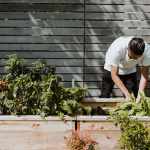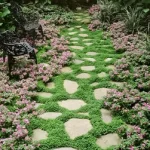There are several advantages of growing Hydroponics over the traditional soil. In this article, we’ll talk about the ecological advantages of hydroponic cultivating. Yet, before we start discussing the advantages, we should go over what hydroponics is first as many individuals may not know about it.
What Is Hydroponics?
Hydroponics is the process of growing plants without utilizing soil. In the traditional way of growing plants, the soil is one noteworthy way through which plants get the supplements they need to develop, alongside the sun and water. With hydroponics, alternatives to those supplements are directly given to plants as opposed to being absorbed by the plants through soil. So because of which, the utilization of soil can be totally eradicated.
Hydroponic growing systems are generally closed systems, with plants being grown completely in nurseries. The incredible thing about utilizing hydroponics for the cultivation of crops is that the system itself offers advantages and benefits to ‘Mother Nature’ that essentially don’t exist when you are performing traditional cultivation. Here are five ecological advantages of hydroponic growing.
Much Better for The Earth and Soil:
Soil wearing away is only one of the issues related to traditional farming. In certain countries, old forests, which are a part of the Earth’s “lungs”, are chopped down and cleared to transform large territories into agricultural land. The amount of farmable land accessible for commercial agriculture has been consistently shrinking since the Second World War. The land has turned out to be scarce to the point that we are touching nature’s reserves of forests, to make sure we can keep developing food for the Earth’s regularly expanding human populace. Apparently, you still need a little land when you take part in hydroponics. Unlike traditional farming, the amount of land required for hydroponics is reduced. Quite a lot more is possible with hydroponics in a little space, contrasted with conventional farming. Since it doesn’t require soil, hydroponic developing practices can be utilized in zones with a harsh atmosphere and minimal rich soil, as in the desert. Moreover, there are various types of hydroponics setups. You can consolidate aquaculture and hydroponics and think of an aquaponics system that produces flowers, vegetables, fruits and fish. The measure of time expected to grow a few batches of plants is a similar time required for fish to mature to plate-size. Simply imagine the potential outcomes of applying hydroponics to commercial-scale cultivation of vegetables, fruits and different crops.
Less land is required:
A standout amongst the best things about hydroponics is that less land is required to grow plants, as compared with customary farming methods. For instance, when you are planting cabbage, lettuce or tomato plants in soil, you are using a lot of space. Unfortunately, there is a constrained amount of space and farmland on Earth. With customary farming, you can be as compressed as you’d like, yet it remains a reality that each plant you put into the ground consumes a fixed space that doesn’t change all through its development time. This is the opposite when you’re utilizing hydroponics. Pots can be put nearer together, without causing any issues in the development of plants. Nutrients in the growing solution are distributed in water contrasted with soil. In fact, commercial hydroponics will, in general, consume just 1/5 of the land required for a similar amount of plants being developed on farmland. In case you’re thinking how hydroponics farmers save more than enough of land, one way is by structuring systems so that a portion of the plants can be suspended in mid-air to save space. A farmer can likewise utilize various levels of frames with appropriate plumbing to make a similar impact on their plants.
Decreased Use of Pesticides and Herbicides:
In customary farming, two sorts of sprays are used: herbicides and pesticides.
Herbicides are sprayed to subsequently kill off undesirable plants (these are for the most part called weeds), while pesticides are used to control pest insects.
- The spraying of pesticides and herbicides do extraordinary harm to nature:
Pesticides can be cleared away by rain, contaminating the environment. Pesticides poison the target bug yet can possibly harm different animals too. But, with hydroponics, there is no weed growth since it takes time for plants to develop into hydroponic grow medium. Hydroponic grow medium does not work precisely like soil. There is no compelling reason to utilize herbicides.
- There likewise isn’t abundantly requirement for pesticide use. Why?
Generally, crops will be secured by closed greenhouses. These greenhouses can be fortified to resist pest attacks.
Less Water is Used:
Truly, the utilization of water is something that we all consider when we are cultivating crops. Crops should be always hydrated and they will effortlessly dry out if there isn’t adequate watering. The issue with soil is that once the water is supplied, it is consumed by the dirt and the excess sinks past the roots. So, we need to consistently renew the supply of water to keep plants hydrated and alive. With hydroponics, there is a water bank, and the water in this water bank is either flowed or supplied directly to the plants. There is some loss to evaporation, which is typical, yet much water is held for a considerable length of time and weeks. Generally, hydroponics systems are maintained by adding supplements to the water. There is no compelling reason to constantly pump new water into the system. Additionally, hydroponic growing uses just 10% of the water as compared to the plants in conventional soil. Simply imagine how much water could be saved over a significant period.
Decreased Fossil Fuel Use with Flexible Growing Locations:
This may not seem like an environmental advantage, yet it is. Just imagine what amount of fuel do we consume regularly to ship food long distances to markets? With hydroponics, commercial cultivators have the choice of setting up their greenhouses in areas that are nearer to their proposed markets or distribution channels. Basically, this chops down the requirement for costly transportation. This improves the profit of the hydroponics cultivator and furthermore chops down the pollution-related to the transportation of merchandise. Keep in mind that this may not seem like a big deal, the consolidated effect of several hydroponics cultivators after some time creates a difference. Consider things in the long term. The adaptability of hydroponics helps the environment by diminishing emissions and the overall carbon footprint related to food production and market transport.
In A Nutshell:
We need to accept that Hydroponics is dependably a part of present-day agriculture and can be the farming of future with demonstrated competitive points over soils – Space saver, compelling utilization of plant nutrients, no weeds, not as much of pests, steady and higher yields, fewer fertilizers and bug sprays utilized, simple to transplant.
Author Bio:
I’m Adalyn, friends call me Addy. I’m a passionate writer and blogger. I love reading books and experiencing new things in life.










